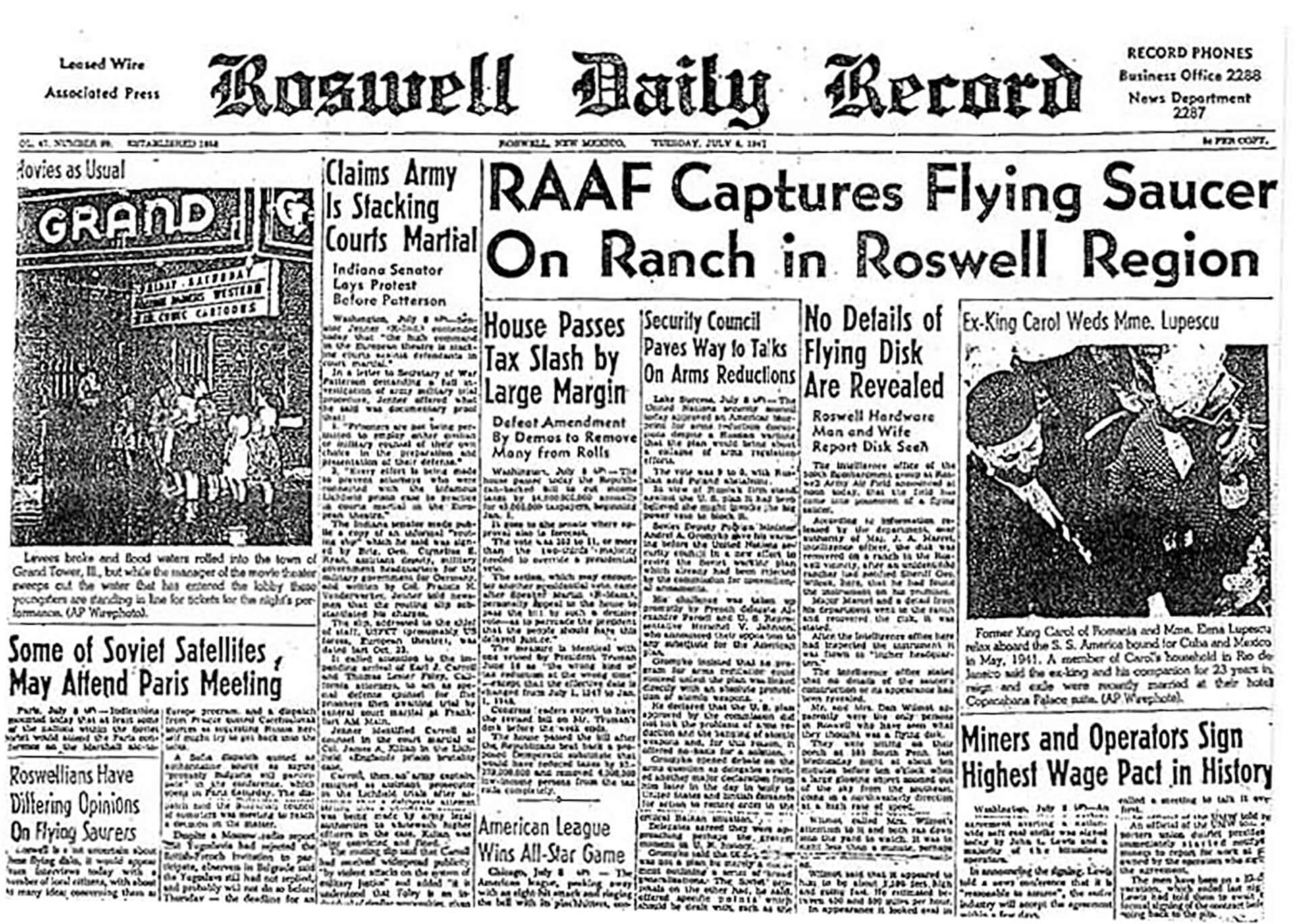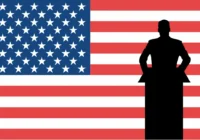On the face of it, the proposed “National Defense Authorization Act for Fiscal Year 2024” doesn’t sound like very glamorous or exciting reading. Even the most meticulous of lawyers’ eyes will be glazing over while they scroll over the mundane section headings and definitions of the proposed legislation.
Section 554, entitled “Community college Enlisted Training Corps demonstration program,” is unlikely to raise the heart-beat. There’s passing acknowledgment of our contemporary gender sensitivities in section 583, entitled “Prohibition on requiring listing of gender or pronouns in official correspondence,” but I’m afraid that is not going to be the subject of this article.
Interesting little quirks pepper the legislation: ongoing claims relating to waste from the Manhattan Project can be found in section 1099AA, no doubt essential reading for anyone who’s just come back from the cinema after watching Oppenheimer. Section 581 extends deadlines for the review of World War 1 valor medals. Who would have thought that this was something we were still figuring out and spending money on?
Persevere through the text, though, and it becomes very clear that something very, very interesting is about to happen. This just could be the most important piece of legislation ever drafted in human history, with incendiary consequences. It will potentially answer, once and for all, whether or not we are alone in the universe.
Metaphorical echoes of Copland’s Fanfare for the Common Man start to resonate when we get to “Division G – UNIDENTIFIED ANOMALOUS PHENOMENA DISCLOSURE.” When you see it, your scrolling immediately pauses, with first thoughts of, Wait a minute, did I read that correctly? The division in question is described as the “Unidentified Anomalous Phenomena Disclosure Act of 2023.”
So what does the Unidentified Anomalous Disclosure Act of 2023 actually say? There are no prizes for guessing what it might be associated with following recent sworn testimony by David Grusch, David Fravor and Ryan Graves before Congress earlier this summer on the subject of strange goings on in the skies, crashed craft from other worlds and “biologics” described as “non-human” in origin.
Evidently, members of Congress have followed up on Grusch’s multiple responses along the lines of, I can’t answer that now in public, but can do so behind closed doors. Those meetings appear to have taken place, and those few members of Congress who are security-cleared to attend those meetings must have reached some astonishing conclusions.
The introductory sections of the act hit you like an express train. Section 9002(a)(4) states that: “Legislation is necessary because credible evidence and testimony indicates that Federal Government unidentified anomalous phenomena records exist and have not been declassified or subject to mandatory declassification review.”
The act provides for the disclosure of “technologies of unknown origin” and evidence of “non-human intelligence”. Just pause for a minute: if Congress legislated for hobgoblins, dwarves, hobbits, dragons and orcs, you would think that it had lost the plot, right? By inference, it must have seen evidence in relation to the existence of those hobgoblins, dwarves, hobbits, dragons and orcs, or why legislate in detail in relation to them? Can you see where this is heading?
To emphasize the point, word searches for “unidentified anomalous phenomena” tally 169 counts in the bill’s text and references to “non-human” tally 26. On the other hand, “tinfoil hat” (in whatever spelling) appears nowhere, and neither does “conspiracy” or “alien,” except in the unrelated legal senses of those terms. This is serious business. Evidently, Congress is not concerned with crackpots and sci-fi enthusiasts, but with extraterrestrial intelligence and technology themselves.
So just what evidence does Congress think might be out there? We can glean some insight from the disclosure procedures, from the exceptions to those procedures that Congress has carved out and from how the bill describes the information and artifacts concerned.
Disclosure?
Section 9004 of the act sets up a record collection in the National Archive of all records that the government may have on the subject of unidentified anomalous phenomena. That’s great, you might think, but it might wind up empty if government departments claim that they have absolutely nothing in their records to contribute.
In that regard, section 9005 is quite interesting. Each government office would have to identify and organize their records on the subject and prepare such records for inclusion in the National Archive, with an additional provision preventing their destruction, alteration or mutilation in any way.
But what about the really sensitive stuff? There’s a further catch in the provision referring to “records pending review,” which seems to suggest that whatever data dumps might occur are likely to be very benign, with the more serious stuff being constantly queued with mysterious reasons for delay.
Still, section 9005(c) does say that, within 300 days of the date of enactment of the act, the head of each government department has to review, identify and organize each record of anomalous phenomena for disclosure to the public, review by a board created by the act and transmission to the National Archive.
But disclosure doesn’t just apply to government records. The act defines a “close observer” as anyone who has come into close proximity to unidentified anomalous phenomena or non-human intelligence, and a “Controlling Authority” means any federal, state or local government department (presumably including the Sheriff’s office in Roswell), commercial company, academic institution or private sector entity in physical possession of technologies of unknown origin or biological evidence of non-human intelligence.
These are quite wide-ranging definitions and will no doubt spook private-sector entities who have been alleged to have such materials in their possession, though the inclusion of “physical” in the definition of “Controlling Authority” also makes it quite narrow. If a corporation had such material, an astute lawyer would advise its transfer to an off-shore shell company in order to argue that they don’t possess it, avoiding difficult questions about how they got it. The definition should perhaps be expanded to include records relating to such material (which will inevitably run the risk of destruction) and possession by entities in foreign jurisdictions over which American companies exercise control.
Preventing disclosure?
Aside from these possible loopholes, sections of the act address the possibility that some material may remain concealed.
In that regard, paragraph (D)(i) of section 9005(c) is a critical provision. When deciding to disclose, the head of each government department shall determine whether the unidentified anomalous phenomenon records are covered by the standards for postponement of public disclosure. The act establishes a board to review such cases. Naturally, in these circumstances, you can easily imagine that the files would be carted off to the board and never actually see the light of day.
Section 9006 basically says that disclosure can be postponed if there’s clear and convincing evidence that the threat to military defense, intelligence operations or conduct of foreign relations posed by the public disclosure of anomalous phenomena record is of such gravity that it outweighs the public interest of disclosure.
This is the logical paradox we continue to find ourselves in when we talk about little green men and flying saucers. If it’s real, then it’s obviously a national security issue; and can’t be disclosed. If it can’t be disclosed, then by inference, it is real; and if it can’t be disclosed, then the very evidence that proves that they exist is withheld from public scrutiny.
The review board itself will make the contentious determination of whether disclosure needs to be postponed. Section 9007, which governs the process, is a very dense piece of drafting and requires multiple readings to see the wood and not the trees. Essentially, we can summarize it as follows: the board’s nine members are appointed by none other than the President of the United States (with the advice and consent of the Senate) and shall be suitably qualified, security-cleared and without conflict of interest.
Whether the review board reaches decisions by majority or unanimity is not abundantly clear, but who those nine members may be is obviously going to be fundamental to the decision-making they might be capable (or incapable) of. Depending on the background of the appointees selected, their views may naturally align with, or potentially oppose, embedded positions within the Department of Defense or the Pentagon.
Irrespective of the decision of the review board, ultimately, under section 9009(C)(4)(B), the review board has to give the President contemporaneous notice of its determination; and the President has the sole ability to require the disclosure (or even the postponement of disclosure) of records. The buck stops with the President, it would appear.
Alien technology and bodies?
Of course, we don’t know what kind of material the act, if passed, might uncover. But we can infer some quite extraordinary things from the act’s provisions and definitions.
To get all closet Roswell conspiracy theorists excited, the act refers to “Legacy Programs,” meaning all federal, state and local government, commercial industry and private sector endeavors to collect, exploit or reverse engineer “technologies of unknown origin” or examine biological evidence of living or deceased “non-human intelligence” that predate the act. And, of course, the term “Unidentified Anomalous Phenomena” includes what we would historically call flying saucers or UFOs.
If the earlier parts of the act aren’t jaw-dropping enough, then section 9010 will have your eyeballs on stalks. The provision begins with the statement that the Federal Government “shall exercise eminent domain over any and all recovered technologies of unknown origin and biological evidence of non-human intelligence that may be controlled by private persons or entities in the interests of the public good.” All such material, presuming it exists, shall be made available to the review board for examination. Following such examination, the review board shall determine whether it constitutes technology of an unknown origin or biological evidence of non-human intelligence and whether it qualifies for postponement of disclosure.
That the provision stops there begs further questions. It’s not clear what “eminent domain” means, and it’s not clear whether private persons or entities are to be construed to include legal persons like corporations. It’s an extraordinary provision, potentially suggesting a nationalization or expropriation of such technologies and biological evidence by the Federal Government. If so, the obvious question is how a private company or entity came into possession of such material in the first place; and it is worth underlining that “controlling entities” in possession of technologies of unknown origin or biological evidence of non-human intelligence, as defined in the act, include the private sector.
Is this tacit acknowledgment that the government has off-loaded crash retrieval material to the private sector for the purpose of reverse engineering? If so, then it begs the question as to who actually owns the material in question and any derivative products from it. Does documentation account for the transfer of ownership or conditions attached to it? What intellectual property rights have arisen from that material? Have they been registered? By whom?
A further point for reflection. The act assumes that potential possession of biological evidence of non-human intelligence is in fact, dead. But what if it were alive? On what legal basis does the detention of non-human intelligence rest? And with what oversight conditions and by whom? What legal rights should it have? One could suggest that if contact was benign, then treatment parallel to diplomatic representatives would be intuitively appropriate. If the contact was malevolent, then treatment in accordance with applicable criminal law on detention would be the intuitive parallel. Essentially, the act does not contemplate a scenario (and the consequences) where non-human intelligence is found alive and the pandora’s box that it opens.
A historic document?
“Wow!” to quote astronomer Jerry Ehman, scrawling in red pen on the data printout recording the famous radio signal anomaly received by the Ohio State University’s radio telescope in 1977.
Is this another “Wow!” moment? For the first time in history, we are seeing a piece of legislation that is likely going to become law (with no doubt, last-minute revisions to potentially water down the consequences of it) that tacitly assumes at its starting point that, far from us being alone in the universe, parts of that universe may already have been (and continue to be) here.
By analogy to hobgoblins, dwarves, hobbits, dragons and orcs, it’s absolutely inconceivable that Congress would legislate about a subject in the absence of evidence to suggest that its subject matter requires regulation. To say that the act is “out of this world” is a metaphor that just also happens, for perhaps the first time ever, to relate to its subject matter.
Though the congressional hearings of July 2023 have obviously catalyzed the timing of it, the act must have been in the drafting pipeline for some considerable time. You can’t just magically conjure up something of this detail and complexity without a substantial lead time, with review and commentary by relevant stakeholders.
Even though the structured processes within the act will be fairly familiar for any constitutional lawyer, its subject matter is evidently not; perhaps the closest analogy for private law is that of how we deal with confidential information and to whom it can be disclosed.
On that analogous note, the mechanics of any determination by the review board are going to be absolutely critical. If it discloses, then who knows what the consequences might be. If it fails to disclose, we implicitly infer that the only reason for blocking disclosure is the very fear of what those consequences will be.
It is on that note — what the consequences might be — that we should further reflect. The purpose of the act might very well be to establish the truth about a subject that has long been ridiculed, but the reality of what we may discover will have its own ineluctable consequences. Who of us are ready for that?
[Anton Schauble edited this piece.]
The views expressed in this article are the author’s own and do not necessarily reflect Fair Observer’s editorial policy.
Support Fair Observer
We rely on your support for our independence, diversity and quality.
For more than 10 years, Fair Observer has been free, fair and independent. No billionaire owns us, no advertisers control us. We are a reader-supported nonprofit. Unlike many other publications, we keep our content free for readers regardless of where they live or whether they can afford to pay. We have no paywalls and no ads.
In the post-truth era of fake news, echo chambers and filter bubbles, we publish a plurality of perspectives from around the world. Anyone can publish with us, but everyone goes through a rigorous editorial process. So, you get fact-checked, well-reasoned content instead of noise.
We publish 2,500+ voices from 90+ countries. We also conduct education and training programs
on subjects ranging from digital media and journalism to writing and critical thinking. This
doesn’t come cheap. Servers, editors, trainers and web developers cost
money.
Please consider supporting us on a regular basis as a recurring donor or a
sustaining member.
Will you support FO’s journalism?
We rely on your support for our independence, diversity and quality.







Comment